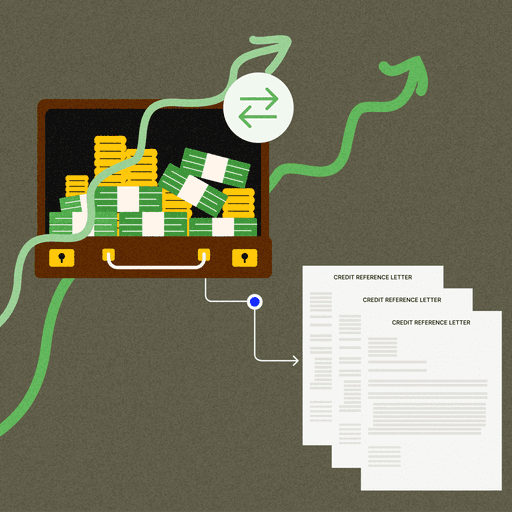
5 Accounts Receivable Collaboration Tools that Boost Customer Experience
- 11 min read
Accounts receivable collaboration tools help AR teams enhance communication both internally and with customers.
This article explores why collaboration—and collaboration tools—are essential for accounts receivable. It also looks at 5 collaboration tools that AR teams can use to boost customer experience to varying degrees.

Great communication between accounts receivable (AR) teams and customers drives a great AR experience, which in turn, boosts customer experience (CX). And bringing together all stakeholders in the AR process is the easiest way to boost communication.
However, getting stakeholders to collaborate and communicate when collections is involved is easier said than done. Versapay's State of Digitization in B2B Finance revealed that 82% of C-level executives lost future opportunities due to miscommunication in the payment process.
Collaboration tools help accounts receivable teams enhance communication—both internally and externally—but many come with limitations. Some are simply not scalable, and others might not give you the boost you need to create greater AR efficiencies, accelerate cash flow, and drastically improve customer experience.
In this article, we'll:
- Explain why collaboration is essential for more efficient accounts receivable,
- Define the best accounts receivable collaboration tools—ending with the most valuable,
- Teach you how to extract the most from each tool, and
- Help you prioritize communication channels if delivering great CX is your goal
Why collaboration is essential for efficient accounts receivable
Our report on the State of Digitization in B2B Finance revealed that 42% of executives agreed that better communication with customers is a key benefit of digitizing accounts receivable. However, 72% noted their AR department isn't customer-oriented enough.
AR digitization is the how in the customer experience equation. Collaboration is the what. Collaboration removes several common hurdles between AR teams and customers, automatically improving CX. Here are four reasons you must prioritize collaboration in your accounts receivable workflows:
- Collaboration eliminates clerical work; saves your AR team time
- Collaboration resolves disputes quickly; gets you paid faster
- Collaboration reduces invoice processing costs; saves your business money
- Collaboration enhances CX; improves your business’ reputation
Collaboration eliminates clerical work; saves your AR team time
How often does your accounts receivable team chase internal teams for document proofs and follow up incessantly with customers on past-due invoices? AR teams relying on manual processes cannot seamlessly collaborate with customers—let alone other departments in your company—leading to invoice processing and dispute resolution delays and frustrated customers.
Your highly qualified employees are performing clerical tasks instead of removing hurdles to cash flow. Electronic processes that integrate with AR collaboration tools streamline these clerical tasks or build a self-service element into them. When combined with advanced AR automation functionality, your AR team will spend less time on meaningless work and more time on value-added tasks.
Collaboration resolves disputes faster; gets you paid faster
Dispute management seems like a hurdle at first glance, but in reality, it is an opportunity for your AR team to enhance CX. Disputes give you the chance to display empathy, eliminate common pain points your customers experience during the invoice-to-cash process, and offer visibility into your workflows and case statuses.
As a result of better collaboration, you can move all stakeholders onto the same page and resolve disputes quickly. Faster payment times are a side-effect of speedy dispute resolution.
Collaboration reduces invoice processing costs; saves you money
Recent research by APQC revealed that the median cost of processing an invoice was $2.80, with the 75th percentile spending $6 per invoice. Hiring highly-qualified accounts receivable professionals and detailing them to execute manual tasks is a surefire way to increase your costs of processing an invoice.
Digitization plays a major role in reducing these costs. Aside from freeing employees to conduct value-added work that boosts cash flow (like clearing disputes faster), digitized, collaboration-focused processes also help your customers self-serve.
For example, collaborative payment portals give your customers outstanding access to account statuses—including invoice information with payment due dates—removing the need for payment follow-ups from employees. Your AR team does not need to physically mail invoices or spend time tracking customer emails and internal documents when answering queries.
As a result, you can build a leaner AR department and let technology enhance your customer relationships by giving employees more time to focus on such tasks.
Collaboration enhances CX; improves your reputation
Invoice disputes cause significant headwinds to revenues. Thanks to poor communication between stakeholders and a lack of electronic tools offering insight into payment statuses, AR teams are often unable to resolve disputes, instead escalating to legal departments and executives.
A poor invoice-to-cash process—one that neglects or deprioritizes collaboration—produces bad customer experiences, negatively impacting your reputation.
Your AR team is just as important as sales and customer success in defining CX since it executes the payment stage, a sensitive issue for customers of all sizes. A collaborative AR process nips customer issues in the bud and helps accounts receivable—the function—quickly answer questions and build great customer relationships.
5 accounts receivable collaboration tools
So, how can you squeeze the most out of your existing collaboration channels, and which future-proofed collaboration tools should you consider for bettering your accounts receivable processes?
Let’s examine five collaboration tools and discuss what they are, how you can extract the most value from them, their long-term viability, and their shortcomings. The five tools (from least to most valuable) are:
- Phone calls
- Emails
- Instant messaging
- Basic payment portals
- Collaborative payment portals
—
Wondering how real businesses put these tools to work? This on-demand webinar has all the answers.
1. Collaboration tool: phone calls
Phone calls are one of the most common methods AR teams use when communicating with customers. The tools and processes are easy to install—and instill—and don't need deep expertise to execute. Conversely, phone calls can be intrusive and in today's modern era, are a bit quaint. Research shows that customers prefer messaging and digital communication over phone calls.
Despite these negatives, phone calls are great collaboration tools for accounts receivable teams if you have an existing and strong relationship with your customers.
Get the most out of phone calls:
- Record your calls—Recording calls documents important information you can refer to later and can more easily relay to your customers.
- Call at the right time—Ask your customer when they prefer to speak. You'll remove any feelings of intrusion as a result.
- Be compliant—If you're making collection calls, make sure you're complying with the rules.
Here are some tips on how to make more effective collections calls.
2. Collaboration tool: emails
Along with phone calls, emails are an oft-used communication and collaboration channel among accounts receivable teams. Emails are easy to send and automate. They are also less intrusive than phone calls. However, compelling your customers to take action following an email is notoriously tough.
Emails also work only for a very specific portion of the invoice-to-cash cycle. For example, when collecting payment, email is a great channel for delivering automated reminders. However, exchanging information and creating a record of conversations you can easily refer to through email is much more difficult.
Thus, emails often present a veneer of automation but don't always get the job done—nor are they truly adept at promoting collaboration and building better customer experiences.
Get the most out of email:
- Keep it focused—Address one subject at a time to avoid recipients losing track of the conversation.
- Verify addresses—Send emails to the wrong inbox, and you'll encounter frustrating delays.
- Examine for voice and tone—Have someone else on your team review your emails to avoid coming across as too aggressive or inappropriate.
Here are a series of collections email templates you can use to improve your accounts receivable efforts.
3. Collaboration tool: instant messaging
Your customers might take a while to read their emails or even ignore them—intentionally or not. Instant messaging via collaboration tools like Slack is a great way to ensure your messages reach the right person—in a more timely manner. Modern organizations have guidelines around responding to instant messages, so you'll almost always receive a response.
However, instant messages (IMs) can be perceived as intrusive and unprofessional. Make sure you check with your customers if they're open to receiving them. IM channels are a great way to collaborate with stakeholders.
However, IM channels may not work well as data repositories. You can include several people in a dedicated conversation, but referring to and highlighting information embedded in a document is challenging.
Get the most out of instant messaging:
- Review your purpose—Formal communications are ill-suited for IMs. For example, sending collection notices through IMs might be a tad inappropriate.
- Encourage collaboration—Create channels with your customers, sales, and AR team members. They can mitigate small disputes and issues quickly instead of sending emails back and forth.
- Verify if appropriate—Do not send messages or include customers in channels without prior approval. You might turn them off and deliver poorer experiences—the opposite of what you’re intending to achieve.
4. Collaboration tool: basic payment portals
Technological advances in accounts receivable have led to the creation of payment portals—both basic as discussed here, and collaborative, as discussed in the next section. Depending on the tool’s capabilities, customers can use payment portals to execute various tasks including:
- Clearing invoices,
- Raising disputes, and
- Viewing communications and documentation in real-time.
Payment portals—both basic and collaborative—within accounts receivable software also simplify your AR team's tasks since they centralize all customer-related information.
However, despite their ease of use, basic payment portals suffer from a major drawback. They do not encourage collaboration. Communication is usually one-way (from AR to customer; in many cases, basic payment portals operate as data or invoice repositories and lack interactivity beyond accepting payments,) leading to potential customer frustration and increased time settling disputes.
Get the most out of basic payment portals:
- Create intuitive UI—Since two-way communication is typically unavailable, create a UI that communicates statuses and actions clearly.
- Maintain traditional communication—Whether by email or phone or IM, ensure your AR team is in constant communication with your customers.
- Create robust complementary processes—Since basic payment portals often only host data—and accept payments—you must create processes to ensure these datasets are accurate to prevent confusion. Define customer follow-up workflows to avoid communication errors.
5. Collaboration tool: collaborative payment portals
Collaborative payment portals are designed to deliver memorable customer experiences and boost customer affinity—all while supporting collections activities. Unlike the other collaboration tools in this list, collaborative payment portals centralize data, processes, and communication in a single platform.
Using collaborative payment portals—which you can learn more about, here—your accounts receivable team can involve sales during disputes, clarify customer concerns—down to the invoice item-level—and focus on accelerating collections, not just getting ahold of your customers.
Get the most out of collaborative payment portals:
- Automate clerical tasks—Accounts receivable is best executed with a human touch. Automate the clerical tasks and focus your AR team on solving complex customer issues through real-time communications. The result is better collaboration between AR and your customers, resulting in better CX.
- Involve the right people—Make sure you collaborate with the right teams. For instance, if a customer disputes invoice pricing on the collaborative payment portal, loop in the sales team to ensure you've recorded the right prices and included all discounts.
- Integrate with internal systems—Add more value to your AR workflows by integrating them with ERP software. This way, you can automate accounting entries and reduce monthly closing times. Collaborative payment portals that integrate seamlessly with ERPs reduce the clerical work your teams (including and beyond AR) have to execute, increasing overall efficiency.
Collaboration is the key to smooth accounts receivable
Collaboration, driven by modern communication and cloud technology, is the key to delivering a memorable payment experience. Through the power of collaboration, your AR team can move from the back office to the front office and give you another powerful way to build great customer experiences.
Digitization can help you position your AR department as a source of strength no matter the prevailing macroeconomic condition. Download our report on the state of digitization in B2B finance to learn how payments impact customer experience.
About the author

Vivek Shankar
Vivek Shankar specializes in content for fintech and financial services companies. He has a Bachelor's degree in Mechanical Engineering from Ohio State University and previously worked in the financial services sector for JP Morgan Chase, Royal Bank of Scotland, and Freddie Mac. Vivek also covers the institutional FX markets for trade publications eForex and FX Algo News. Check out his LinkedIn profile.


